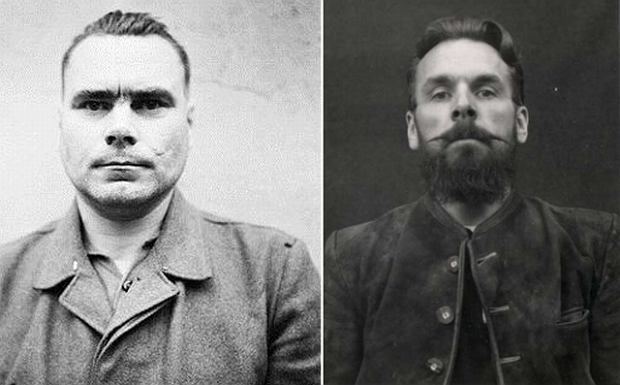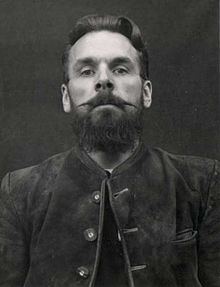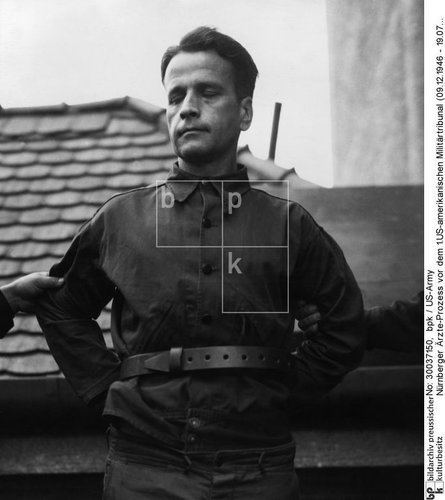Name Wolfram Sievers | ||
 | ||
Died June 2, 1948, Landsberg am Lech, Germany | ||
Nuremberg trial cross examination of wolfram sievers 8 8 1946
Wolfram Sievers (10 July 1905 – 2 June 1948) was Reichsgeschäftsführer, or managing director, of the Ahnenerbe from 1935 to 1945.
Contents
- Nuremberg trial cross examination of wolfram sievers 8 8 1946
- Nuremberg Wolfram Sievers
- Early life
- Ahnenerbe
- Trial and execution
- References

Nuremberg - Wolfram Sievers
Early life

Sievers was born in 1905 in Hildesheim in the Province of Hanover (now in Lower Saxony), the son of a Protestant church musician. It is reported that he was musically gifted, that he played the harpsichord, organ, and piano, and loved German baroque music. He was expelled from school for being active in the Deutschvölkischer Schutz und Trutzbund and went on to study history, philosophy, and religious studies at Stuttgart's Technical University while working as a salesman. A member of the Bündische Jugend, he became active in the Artamanen-Gesellschaft ("Artaman League"), a nationalist back-to-the-land movement.
Ahnenerbe

Sievers joined the NSDAP in 1929. In 1933 he headed the Externsteine-Stiftung ("Externsteine Foundation"), which had been founded by Heinrich Himmler to study the Externsteine in the Teutoburger Wald. In 1935, having joined the SS that year, Sievers was appointed Reichsgeschäftsführer, or General Secretary, of the Ahnenerbe, by Himmler. He was the actual director of Ahnenerbe operations and was to rise to the rank of SS-Standartenführer by the end of the war.

In 1943 Sievers became director of the Institut für Wehrwissenschaftliche Zweckforschung (Institute for Military Scientific Research), which conducted extensive experiments using human subjects. He also assisted in assembling a collection of skulls and skeletons for August Hirt's study at the Reichsuniversität Straßburg as a part of which 112 Jewish prisoners were selected and killed, after being photographed and their anthropological measurements taken.
Trial and execution
Sievers was tried during the Doctors' Trial at Nuremberg following the end of World War II, where he was dubbed "the Nazi Bluebeard" by journalist William L. Shirer because of his "thick, ink-black beard". The Institute for Military Scientific Research had been set up as part of the Ahnenerbe, and the prosecution at Nuremberg laid the responsibility for the experiments on humans which had been conducted under its auspices on the Ahnenerbe. Sievers, as its highest administrative officer, was accused of actively aiding and promoting the criminal experiments.
Sievers was charged with being a member of an organization declared criminal by the International Military Tribunal (the SS), and was implicated in the commission of war crimes and crimes against humanity. In his defense, he alleged that as early as 1933, he had been a member of an anti-Nazi resistance movement which planned to assassinate Hitler and Himmler, and that he had obtained his appointment as Manager of the Ahnenerbe so as to get close to Himmler and observe his movements. He further claimed that he remained in the post on the advice of his resistance leader to gather vital information which would assist in the overthrow of the Nazi regime.
Sievers was sentenced to death on 20 August 1947 for crimes against humanity, and hanged on 2 June 1948, at Landsberg prison in Bavaria.
